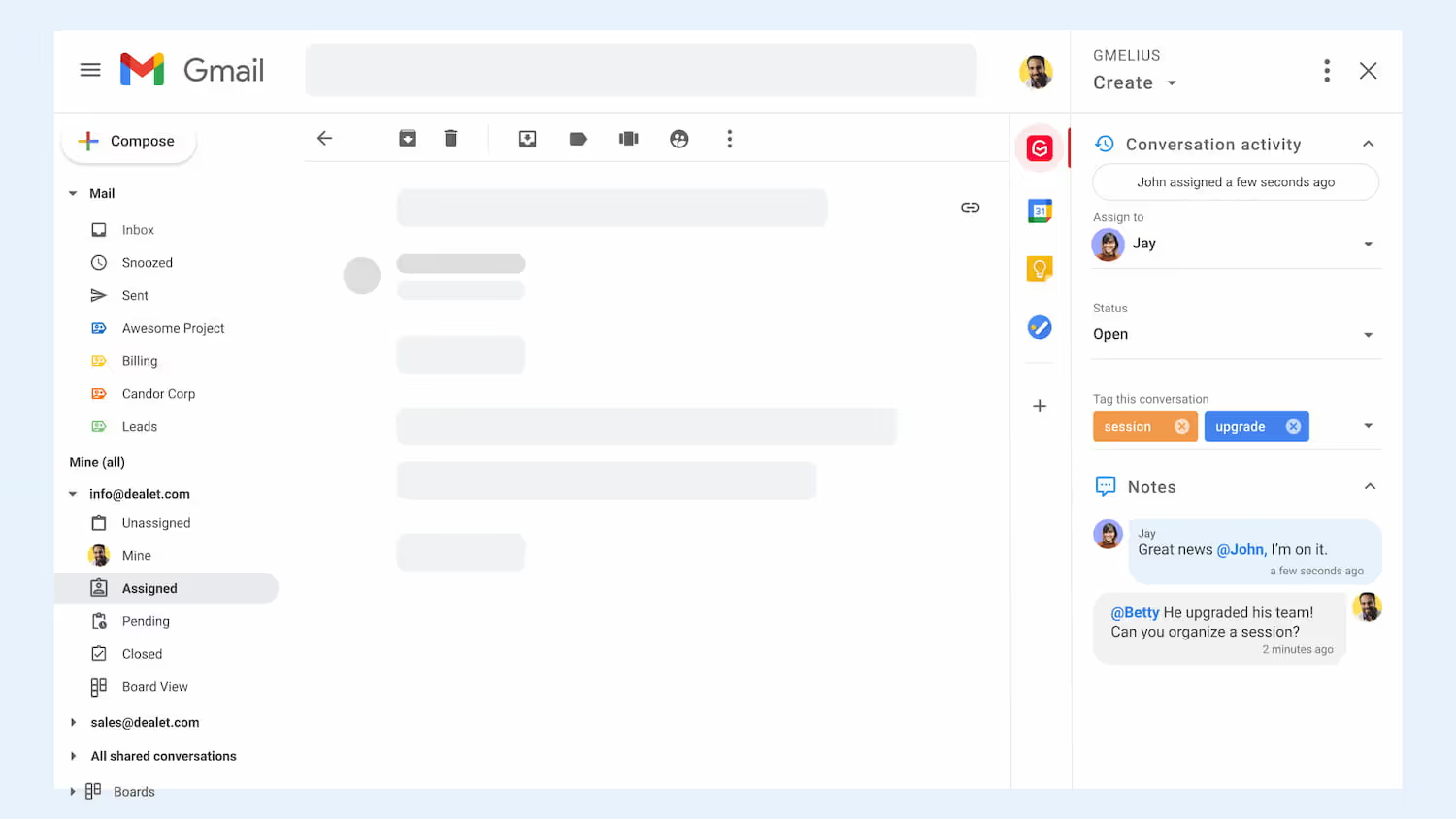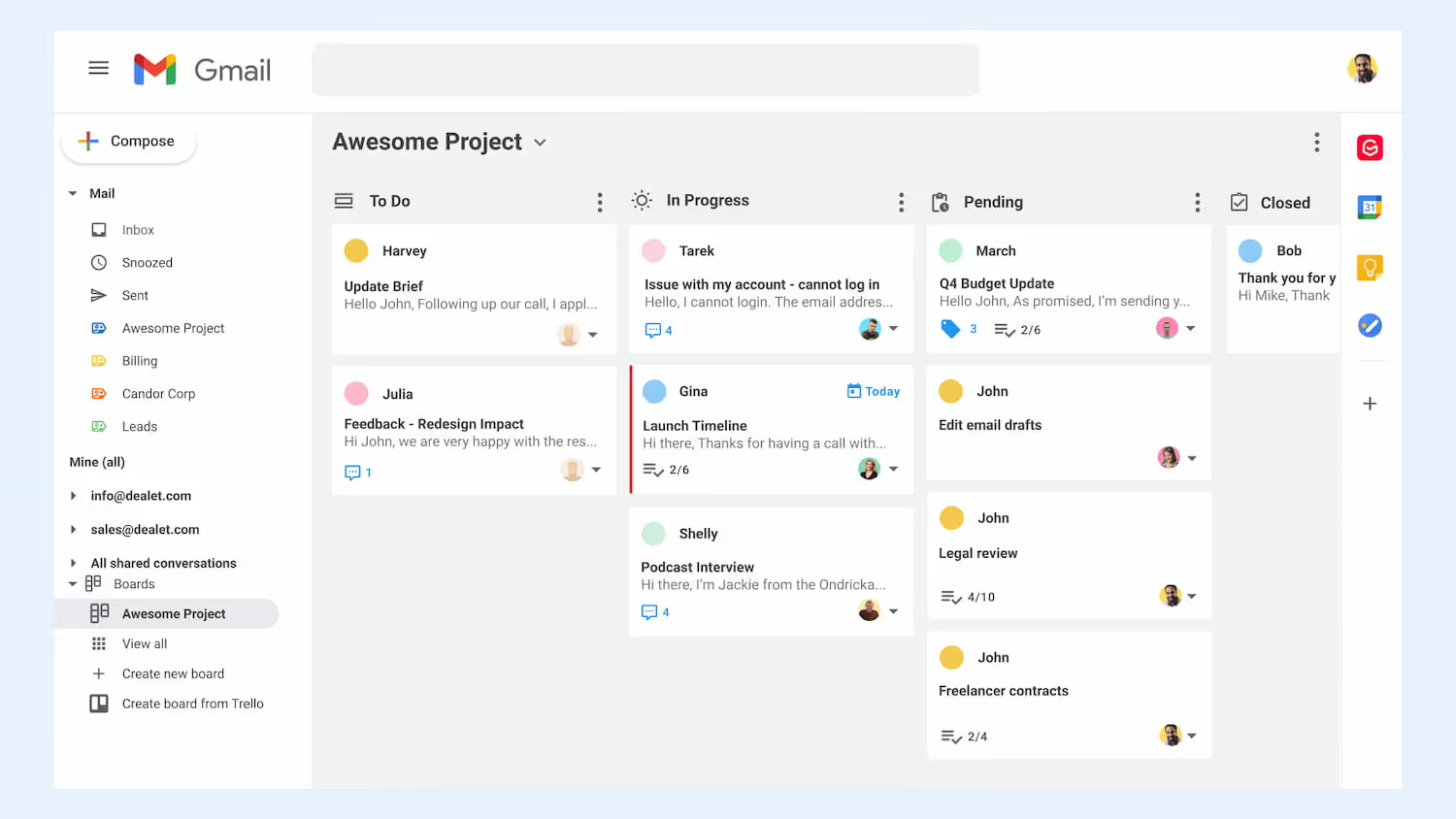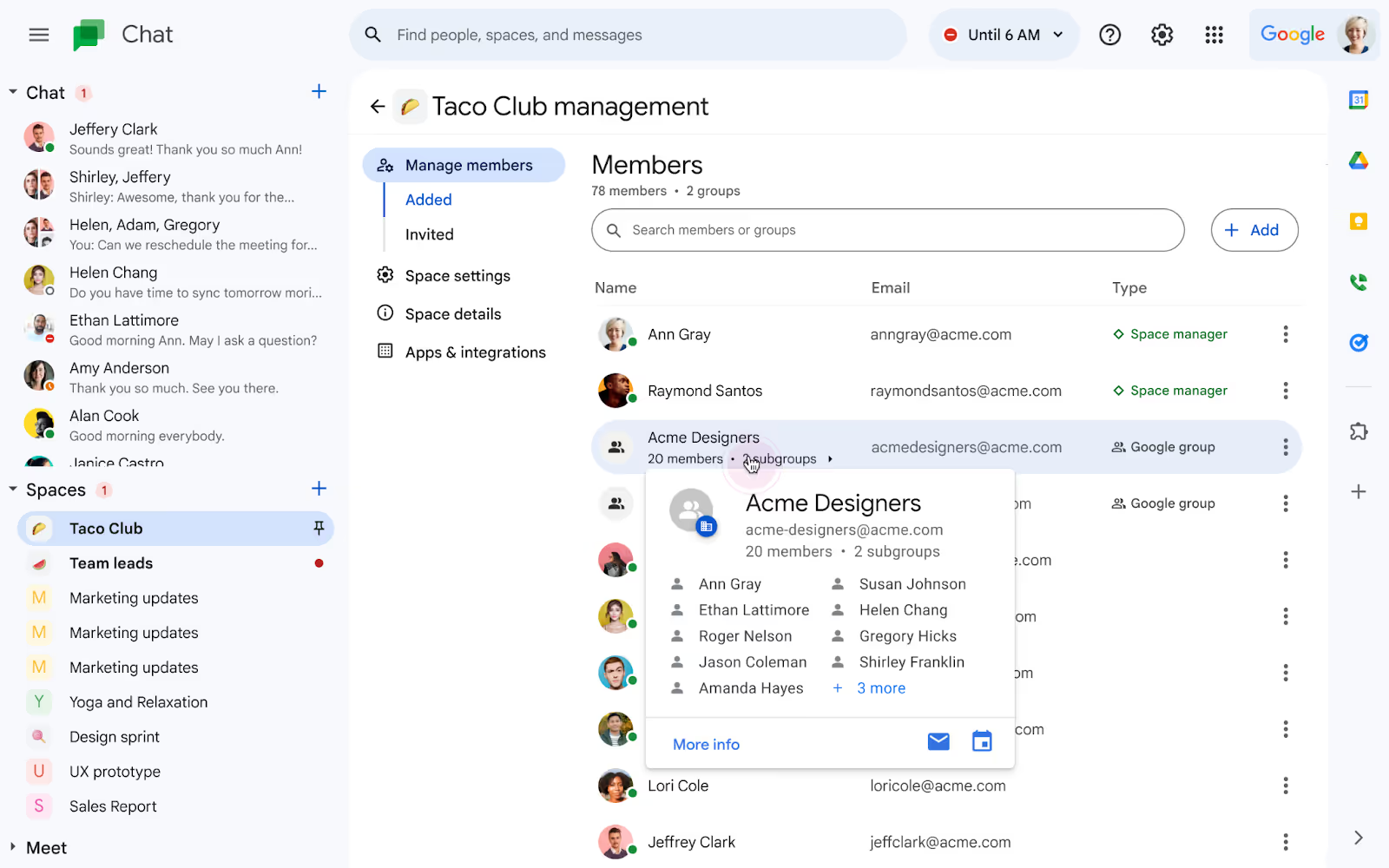La collaboration en ligne est de plus en plus devenue la principale méthode permettant aux équipes de travailler ensemble sur un large éventail de tâches. Les outils de collaboration en ligne pour les entreprises facilitent le processus en proposant une plateforme conçue pour réunir les membres de l'équipe dans un espace numérique, quel que soit leur lieu ou leur fuseau horaire.
Depuis des années, la collaboration en personne est la méthode préférée des équipes qui travaillent ensemble. Cependant, le monde numérique d'aujourd'hui a transformé le monde du travail grâce à l'introduction d'outils innovants pour rationaliser les opportunités de communication et de collaboration en ligne.
Les avantages indéniables de la collaboration en ligne
Le début de la pandémie de COVID-19 a entraîné des changements monumentaux pour les entreprises. Les confinements obligatoires ont éloigné les employés des bureaux en présentiel et ont nécessité une adaptation aux nouveaux environnements de travail à distance. Bien que ces changements aient entraîné la fin de nombreuses entreprises, ils ont également entraîné une Augmentation de 44 % dans les technologies numériques de 2019 à 2021.
1. Productivité
Cette année, de nombreuses entreprises sont revenues à des environnements de travail hybrides ou présentiels, mais l'utilité des outils de collaboration en ligne n'est pas perdue. En fait, la récente poussée technologique a eu un effet considérable sur la main-d'œuvre en améliorant la communication, en facilitant la flexibilité des horaires et en augmentant l'efficacité et la productivité des équipes.
Alors que la collaboration en personne offre de nombreux avantages aux équipes, tels que la communication instantanée et la possibilité d'établir des relations en personne, les outils de collaboration en ligne peuvent réellement améliorer la productivité du travail. Ils réduisent les distractions courantes au bureau et permettent aux membres de l'équipe de travailler ensemble de manière pratique, où qu'ils se trouvent.
2. Accès et inclusivité
Un autre avantage inattendu est apparu, à savoir le sentiment de inclusivité au sein d'équipes qui s'appuient sur leur capacité à échanger des idées en permanence. En l'absence d'un tel accès illimité à la collaboration, ce type de camaraderie au sein de la foule fait souvent défaut dans les collaborations en face à face.
Le travail à partir d'une plateforme unifiée permet à chaque membre de l'équipe d'être vu et entendu (numériquement) en temps réel. Les outils de collaboration numérique offrent des opportunités d'inclusion ; ils offrent plus d'employés une plus grande accessibilité à des réunions et à des discussions qu'ils ont peut-être manquées dans des bureaux en face à face.
Les réunions en ligne donnent la parole aux membres de l'équipe qui sont trop mal à l'aise pour partager des idées dans une salle de réunion bondée, soit en raison d'une peur profonde de parler en public, soit de se faire arrêter ou d'être interrogés par d'autres membres de l'équipe plus bruyants.
Ce type de préjugé inconscient constitue depuis longtemps un problème majeur pour le personnel que les outils de collaboration en ligne peuvent commencer à résoudre. Ces outils de communication encouragent des discussions ouvertes et continues en ligne dans un format structuré et organisé.
Chaque information est clairement documentée à titre de référence, ce qui facilite la navigation pour les équipes qui gèrent une charge de travail importante.
3. Économies de coûts
Un autre avantage notable de la collaboration en ligne est réduction des frais généraux. Alors que la collaboration en personne nécessite un emplacement physique pour accueillir les employés, les entreprises opérant à distance n'ont pas besoin de louer des bureaux. Les économies peuvent plutôt être consacrées à des outils de collaboration en ligne qui stimulent davantage la productivité, ce qui se traduit par un retour sur investissement accru.
Les meilleurs outils de collaboration en ligne pour les entreprises
Outils de collaboration en ligne for business révolutionne la façon dont les équipes travaillent en proposant une plateforme sécurisée pour partager des idées, enregistrer des conversations et travailler ensemble, où que se trouvent les membres de votre équipe. Cependant, cela peut sembler difficile lorsque vous recherchez toutes les options disponibles.
Bien que la taille de votre équipe ne vous limite pas, il s'agit d'un paramètre de référence utile qui peut vous aider à affiner vos choix lors de l'évaluation de l'utilité d'un outil. Vous pouvez travailler avec une équipe de 2 à 5 membres dans un startup, dans un petite entreprise (moins de 75 employés), a niveau intermédiaire entreprise (75 à 400 employés), ou au sein de l'une des nombreuses équipes d'un réseau mondial, au niveau de l'entreprise société.
L'essentiel est de trouver des outils qui répondent aux besoins de votre équipe et qui peuvent évoluer au fur et à mesure de la croissance de votre organisation. Plus important encore, les outils en ligne devraient répondre à tous les besoins de votre entreprise, y compris les canaux de communication synchrones et asynchrones.
La plupart des entreprises utilisent communication asynchrone; ces messages ne nécessitent aucune réponse immédiate, mais certains employés préfèrent l'option de recevoir des réponses immédiates (également appelée synchrone communication). Le courrier électronique constitue un excellent exemple de communication asynchrone, tandis que les outils de messagerie instantanée ou les appels téléphoniques fonctionnent de manière synchrone.
Parmi les outils de collaboration en ligne destinés aux entreprises, citons les documents en ligne qui permettent de les modifier en temps réel, les plateformes de gestion de projet et les boîtes de réception partagées, qui proposent tous des méthodes de communication asynchrones et synchrones.
Examinons de plus près certains des outils de collaboration en ligne les plus couramment utilisés et la manière dont ils peuvent aider les entreprises de différentes tailles.
1. Outils de messagerie instantanée
La possibilité d'envoyer des messages et de recevoir une réponse instantanée est nécessaire pour les entreprises de toutes tailles. Ces types de méthodes de communication synchrones permettent aux employés de rationaliser la communication tout en restant connectés en ligne via un ordinateur de bureau ou un appareil mobile.
Pour une petite entreprise en démarrage, Slack est une plateforme conviviale qui permet aux employés de créer des canaux spécifiques pour diverses fonctions de l'entreprise. Une chaîne Slack est un espace conçu pour discuter d'un thème ou d'un sujet où des membres spécifiques de l'équipe peuvent être invités à discuter de problèmes de support client, de délais d'expédition ou d'initiatives marketing.
Certains canaux offrent la possibilité de mettre en relation des personnes partageant des intérêts communs, comme un club de lecture d'entreprise, un forum sur la santé mentale ou un canal de réseautage pour les comptables de diverses entreprises.
Offrir aux employés un espace dédié à des intérêts divers peut créer des opportunités de collaboration uniques, également gratuites, pour une entreprise qui vient de démarrer. Le forfait gratuit de Slack donne accès à 10 000 des messages les plus récents de votre équipe ainsi qu'à 10 intégrations avec d'autres applications telles que Google Drive, Office 365, etc.
Les forfaits professionnels et professionnels payants peuvent répondre aux besoins des entreprises en pleine croissance ou des petites et moyennes entreprises.
2. Boîtes de réception de courrier électronique partagées
Les boîtes de réception partagées sont des outils de collaboration qui permettent de gérer efficacement les adresses e-mail des entreprises. Plutôt que de gérer des boîtes de réception d'entreprise distinctes avec des identifiants et des mots de passe différents, les boîtes de réception partagées permettent aux équipes de gérer plusieurs adresses e-mail ensemble depuis un seul endroit.
Cependant, de nombreuses boîtes de réception partagées ne disposent pas d'opportunités de collaboration, ce qui peut laisser les membres de l'équipe deviner qui a répondu à quel e-mail. Toute cette confusion se traduit souvent par des réponses dupliquées, voire par une absence totale de réponses.
Gmelius, une plateforme de communication et de collaboration pour Gmail, propose une boîte de réception partagée avec des fonctionnalités de collaboration idéales pour les équipes, qu'elles soient grandes ou petites.

Gmelius permet aux équipes de se connecter à l'aide de leur propre compte Gmail pour consulter les adresses e-mail partagées par l'entreprise. En outre, Gmelius offre également aux équipes la possibilité d'attribuer et de déléguer des conversations, de partager des étiquettes Gmail, de rédiger des notes personnelles dans les marges latérales d'un e-mail et d'automatiser les processus avec des fonctionnalités uniques règles d'automatisation des flux de travail.
La boîte de réception partagée de Gmelius donne aux entreprises un aperçu clair des opérations tout en proposant d'autres intégrations utiles. Tout est accessible via Gmail, ce qui le rend convivial pour les startups et facile à adapter pour les moyennes et grandes entreprises.
Essayez Gmelius gratuitement, ici.
3. Solutions de gestion de projet
La gestion de projet nécessite la collaboration entre les membres de l'équipe, mais il est souvent difficile pour les équipes de se connecter. Les solutions de gestion de projet telles que Trello, Asana et les applications de création de listes de style Kanban aident les équipes à organiser les tâches du projet dans un format organisé.
La collaboration en personne nécessite beaucoup plus d'efforts pour planifier des réunions et organiser plusieurs messages dans les deux sens afin de coordonner les détails du projet.
Les solutions de gestion de projet en ligne réduisent les erreurs de communication ainsi que le temps de coordination entre les équipes. Pour les grandes entreprises, une communication efficace est indispensable. Trello permet aux équipes de créer des tableaux relatifs à des projets spécifiques qui peuvent être attribués aux membres de l'équipe à des fins de clarification.
Les moyennes et grandes entreprises peuvent bénéficier d'outils de collaboration qui donnent la priorité à l'organisation, car la gestion de plusieurs projets impliquant des centaines d'employés peut s'avérer compliquée.
Par exemple, un entreprise de logistique en charge des envois volumineux doit disposer d'un processus organisé et bien documenté pour garantir le succès des livraisons. Plutôt que de coordonner les connaissements par le biais d'appels téléphoniques ou de fils de courriels interminables, les solutions de gestion de projet en ligne assurent le suivi visuel des commandes afin que vous puissiez voir l'étape de chaque expédition, ainsi que le membre de l'équipe désigné qui en est responsable.
Gmelius propose des tableaux Kanban Gmail qui peuvent être synchronisés avec Trello en temps réel pour aider les entreprises de toutes tailles à gérer leurs tâches avec plus d'efficacité. Le visuel ci-dessous montre comment les équipes peuvent séparer les tâches et les attribuer à des membres spécifiques de l'équipe avec des dates d'échéance, des niveaux de priorité et des commentaires concernant le statut.

Conclusion
La clé d'une collaboration en ligne réussie est de trouver, puis d'utiliser, les bons outils pour votre entreprise. La collaboration en ligne est devenue de plus en plus essentielle pour les entreprises à mesure que les opérations numériques se développent. L'utilisation d'un outil tel que Gmelius permet aux équipes de gérer des projets, de se connecter via Slack et d'autres outils de messagerie, et de travailler depuis une boîte de réception partagée, le tout depuis une seule plateforme de collaboration.
Une formation minimale est requise, ce qui permet une mise en œuvre facile pour des équipes de 10, 20 ou 500 personnes. Commencez gratuitement dès aujourd'hui !
Gmelius propose d'innombrables outils de collaboration en ligne pour les entreprises. Découvrez nos fonctionnalités et intégrations et découvrez comment Gmelius est conçu pour améliorer la communication et la collaboration au sein des équipes.
Prêt à démarrer ? Inscrivez-vous dès aujourd'hui !



.avif)


.avif)
.avif)